The Article
1042 Moving Magnet Cartridge From Goldring
27th November 2019

How does this veteran cartridge measure up in today’s hi-fi environment? Paul Rigby puts the Goldring 1042 through its paces and learns that this tool is ideal to solve an old, old hi-fi upgrade issue
You may be used to only seeing hi-fi reviews strictly of new products. Makes sense doesn’t it? They’re new, they’re untried, they’re an unknown quantity – so how do they perform?
And that’s fine. New products need to be investigated.
So do older products, you may be surprised to learn. We sometimes focus too much on the new. We sometimes forget that hi-fi solutions do not always reside on the Coming Soon press release. Sometimes they’re hidden in plain sight. Sometimes, if you have a hi-fi issue, it can be solved by a product already on the shelf.
The problem is that, in the hullaballoo and razzmatazz of a multitude of marketing campaigns, we get side-tracked or dazzled by shiny boxes and fancy packaging or, because of passing time, we forget older products or, who knows, that intriguing older product might not even be on our radar. It may have totally passed us by and we’re not even aware it’s out there.
I’ve been receiving a host of questions from readers looking to upgrade their budget turntable. They’re either looking to upgrade their cartridge first or they’re looking to move up a level in turntable quality. But that cartridge is all too often the sticking point.
The issue is often this. You have a budget turntable with a good quality moving magnet cartridge. Something priced between £50-£100, say. You want to upgrade but are nervous about the apparent leap upwards required from that value-for-money moving magnet cartridge. Many hi-fi users perceive a large financial gap to that upgrade goal. When seeking advice of what to buy, the word is often this: buy a low cost moving coil.
You can buy a cheap moving coil cartridge for around £250 although I’d personally recommend reaching higher than that for a more significant leap in overall sonic performance. Somewhere around £400 perhaps? (A bit more or a bit less, depending on the model but around this figure.)
Now, you can quibble about the above but there is one hidden cost that cannot be avoided. What happens if you’re looking to adopt a moving coil cartridge but you run a moving magnet-only phono amplifier? A common issue. The investment suddenly doubles (or more) because a new phono amplifier, one that supports moving coil cartridges, is now required. So the initial £400 investment is now around £800 – give or take. Again, you can buy cheaper phono amplifiers out there and upgrade in baby steps but for an upgrade worthy of the name, I’d be looking at that figure or even slightly more than that.
To repeat, you can get by spending much less but, while I approve of upgrading, I don’t approve of spending any more than you have to. The smaller those upgrade steps, the more often you end up upgrading and the more money you end up throwing at the problem. And it’s just unnecessary. I would always recommend waiting, saving a bit and then committing to a more significant and longer-lasting upgrade purchase which, in the long run, offers better value for money.
Swirling the above around your head for a while might even be enough to put you off upgrading at all.
What many users forget is that moving magnet technology can offer a simpler solution. Moving magnet cartridges can often do the required upgrade job. Without the attendant wringing of hands and stress too. It can provide a more efficient and easier upgrade path. Moving magnet technology is not all about the scraping-the-bottom, budget, bottom rung performance. Moving magnet cartridges can also be infused with finesse, can also produce elegant musical qualities and can fit the bill when you’re looking to upgrade. Increasing sound quality while saving you money.
Goldring’s 1042 cartridge is a prime candidate for that job.
The 1042 offers a diamond stylus with a Gyger S profile, a line contact type that better hugs the groove than a typical elliptical profile. That stylus hangs off an aluminium cantilever but a cantilever that is pretty darned slim and small in size and thus, lighter in weight and more responsive than many others out there.
Inside are former-less coils of 4,000 turns each but of low mass. They are contained in a one-piece Pocan chassis, a glass-reinforced polyester. That stylus can then be readily removed and replaced when needed.
So how does it sound?
SOUND QUALITY
I played a mixture of Ella Fitzgerald, warbling in front of a large orchestra and Jethro Tull, singing in front of several cases of real ale, to provide a musical contrast and headed straight for both the Ortofon 2M Red and Goldring’s own E3 cartridges as my references. Both occupy the busy £100 or so price point I mentioned above and both are excellent designs in themselves, providing a sense of maturity and complexity when compared to the bundled carts often supplied by many low-cost turntables today.
So, if you’re running a 2M Red or an E3, should you upgrade to something like a 1042? The 1042 is two and a half times the price (a typical retail figure) of both so the improvements should be obvious but is the 1042 now off the pace and showing its age? If the 1042 does offer improvements, what are they? What does the 1042 give you?
The good news is that the 1042 is certainly not off the pace, at least when compared to these £100 cartridges. That stylus profile hugs the groove closer and more intimately. Yes, that means that you will hear a touch more groove noise but you’ll also hear far more detail. The tonal information from this cartridge is just in a different league. Castanets heard on the track, Hernando’s Hideaway from Fitzgerald had a definite wood-like tone as opposed to the basic clicky effect from the cheaper cartridges.
The reverb attached to both LPs was also in greater evidence, largely because the 1042 was infused with less high frequency noise to mask detail. Hence, transparency was much improved.
Bass from Tull experienced greater focus. The cheaper carts were very good indeed but the 1042 alerted you to the fact that dead skin stretched on a metal bucket was being walloped by a big stick. The 1042 offered far more information on this level. Again, the cheaper carts told you a drum was being hit but not much more than that.
Dynamic reach was also superior. The cheaper carts struggled at times. Large scale brass crescendos could sound a little thin and strained on the cheaper carts whereas the Goldring had a confident, smooth approach to the midrange.
In short then, it’s a bit like reading a news story, the cheaper carts gave you the headlines and nothing more than that. The 1042 provided the rest of the story, it filled out the facts and provided context. The upshot? With the 1042 in place, you felt more satisfied with the musical experience.
A more challenging test, I felt, was pitching it against a moving coil. So I looked for my own base model. The moving coil I would heartily recommend as a starter purchase would be something like a Hana EL at around £400. Nevertheless, I tried to undercut that figure for this review only and did. I headed for a MC Gold from Benz, priced at £325.
I didn’t expect the 1042 to win this fight, in fact I expected it to lose. MC technology, if implemented properly and with care, is inherently superior.
Yes, the Benz is more expensive than a 1042 but would the Benz offer enough to warrant the purchase?
Retaining the same records, did the Benz prove superior? Yes it did (although, again, the Hana would have been my preference). In what way did the Benz improve matters? Imagery located each instrument in a superior manner and brought out each instrument a tad towards the ear, giving each a 3D effect, which enhanced detail. Groove noise was a tad higher but so was detail and clarity.
So, the Benz is the choice then, eh? This fight is done?
Not necessarily, no.
While the Benz was superior and the sonic differences were there, the measure of those improvements were not that large. The sound quality from the Goldring was remarkably good for a moving magnet design. There was great subtlety from the 1042, amazing midrange insight, there was a fragility around the treble that you wanted to stand up and salute at while the bass performance was both focused and full of impact.
Comparing the 1042 to the Benz MC, the Goldring had nothing to be ashamed of, there was enough clarity and transparency here to delight and the soundstage was both broad and layered.
So, the 1042 does an incredibly good job for the price. And let’s not forget, the Benz is around £85 more to begin with.
But more than that, if your a MM user, who if you’re running a moving magnet phono amp of around £50-£100? Yes, you can buy relatively low cost MC-based phono amps out there but I’d personally be looking at models priced £400 and more for a wholehearted upgrade. (The Trichord Dino at £500 would be my choice, to be honest.) So, let’s say that you’re running a decent MM phono amp of £100, that’s £300 extra right there. Plus the £85 cartridge price difference? £385 in total.
The Benz is not £385 better than the 1042 in terms of sound quality.
As I say, I’d be more comfortable plumping for the Hana/Trichord combo at £900 for the two.
Why am I banging on about the phono amplifier? Because, when moving up to MC, you cannot and should not underestimate the phono amplifier. For a MC cart, the phono amp is critical. The better it is, the better your MC cart will perform so that price difference is essential in terms of upgrading. They are a partnership. There is no point in buying a top quality MC cartridge and then cutting corners with a low cost moving coil-supporting phono amp.
There is a very good school of thought then that says this. If you’re running a moving magnet cartridge with a moving magnet phono amplifier, don’t upgrade to a moving coil until you have around £800-£900 in your pocket for a new cart and a new phono amplifier. You can upgrade on less but, to me, that’s a false economy.
Faced with that figure, a Goldring 1042 cartridge purchase looks incredibly attractive.
CONCLUSION
The Goldring 1042 not only competes in today’s hi-fi arena, it can and should play a full part on your upgrade ladder, adding more life to your moving magnet-based set-up and, more than that, saving you cash. Finally, it provides a superb suite of frequencies that will engage and delight. This is one serious moving magnet design and one that you can buy with confidence.
GOLDRING 1042 MOVING MAGNET CARTRIDGE
Price: £242 (common Internet retailer price)
Website: www.goldring.co.uk
TO BUY CLICK BELOW:
USA – https://amzn.to/34S0Yap
EUROPE – https://amzn.to/3mLMb70
GOOD: design, mature midrange, focused bass, delicate treble, low noise
BAD: nothing
RATING: 8
[Don’t forget to check out my Facebook Group, The Audiophile Man: Hi-Fi & Music here: www.facebook.com/groups/theaudiophileman for exclusive postings, exclusive editorial and more!]
REFERENCE
Pro-Ject RPM3 Carbon turntable
Tellurium Blue Cables
Blue Horizon Professional Rack System
Harmonic Resolution Systems Noise Reduction Components
All vinyl was cleaned using an Audio Desk’s Ultrasonic Pro Vinyl Cleaner



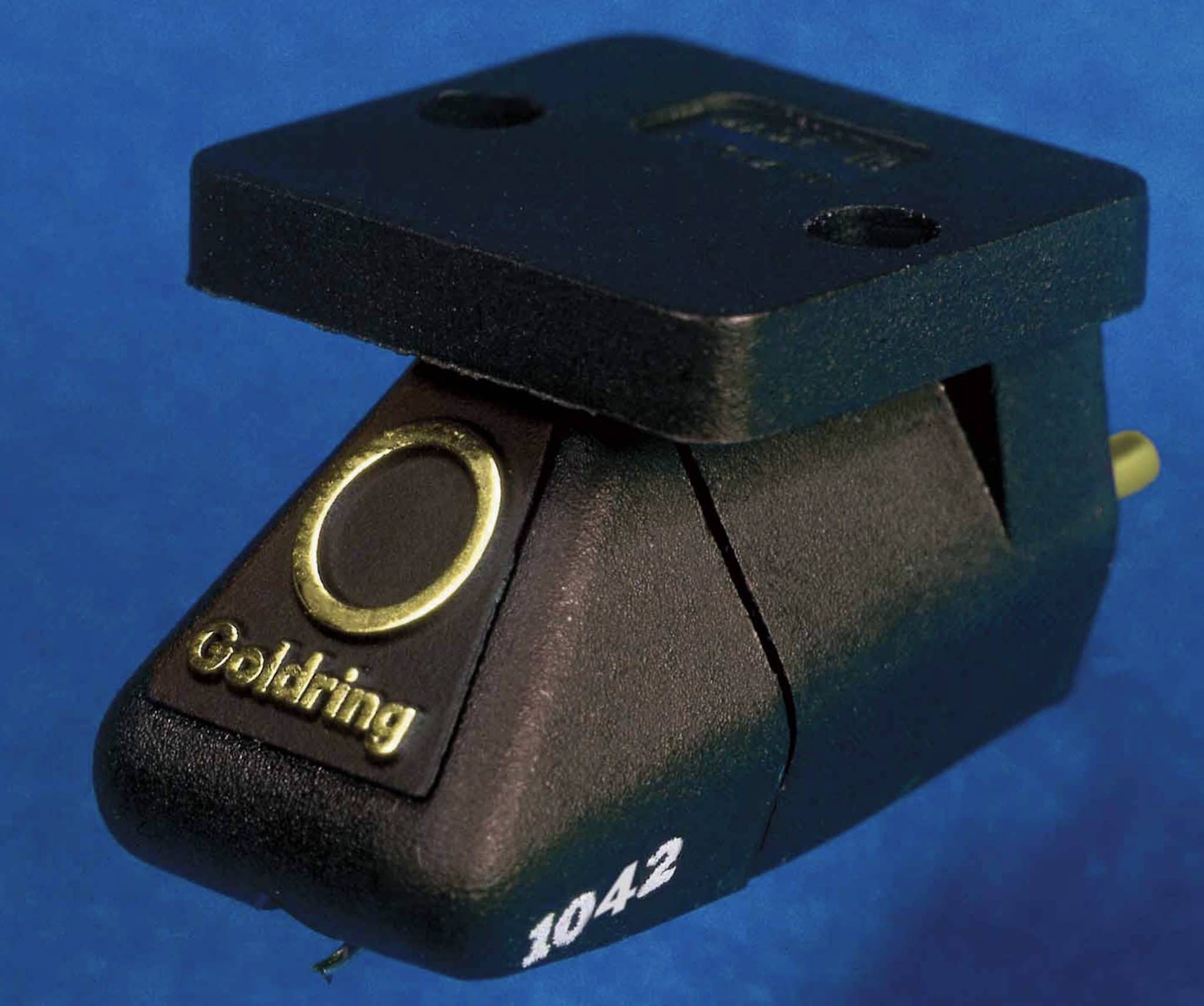
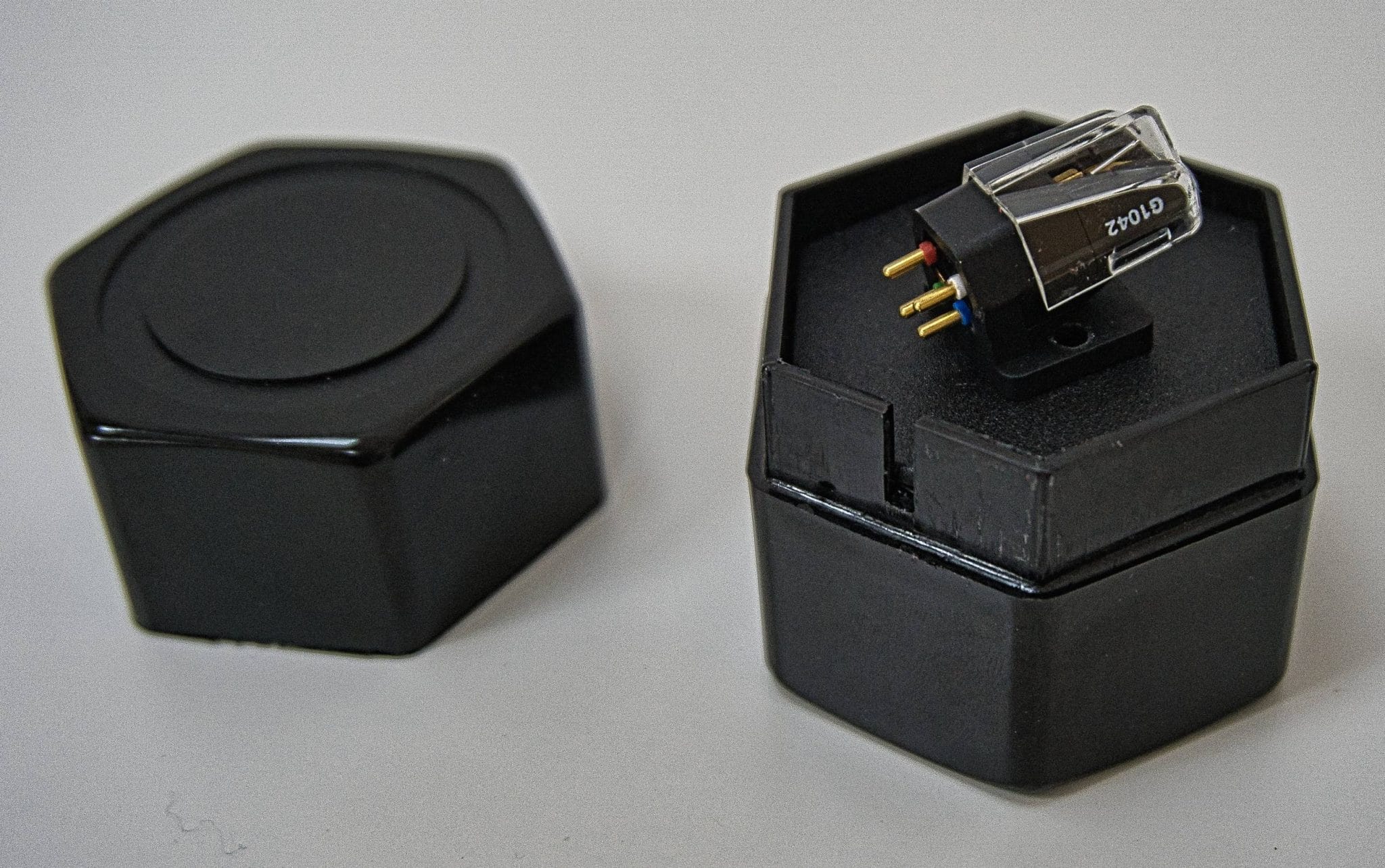
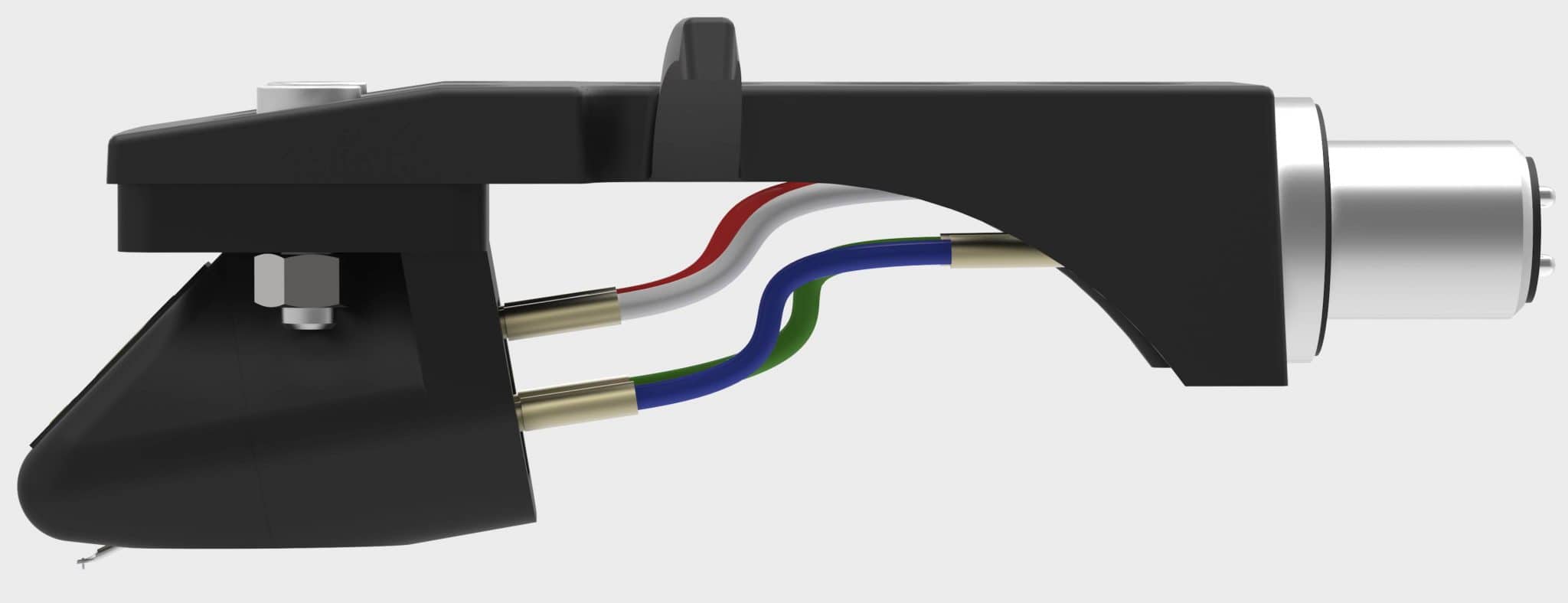



But then given the caveats about how much more expensive an MC is to run, it seems that maybe comparing to the Benz Silver/Hana EH might do away with some of those concerns as a follow-up point.
For me, I already know I like the 1042 more and I consider it to be a much better deal.
I love MC cartridges and the higher up you go the better they are. I only have one MC cartridge installed on one of my tables, the others all have an MM cartridge. The reason I haven’t upgraded to more expensive ones is a great article in Vinyl Press by Bill Hart ‘The Finish Line For Your Phonograph Stylus’ that caused me to pause. In it, Hart states with well reasoned arguments and proof from manufacturers, that after 500 hours any fine line or line contact stylus begins to degrade where significant damage can begin to happen to a record. He states that even those that guarantee 1000 hours still mention that after 500 hours you should have the stylus inspected. Seeing how good the 1042 is I wouldn’t hesitate to buy it if I was building a high end system.
Hi Paul, I have a Leak Stereo 130 integrated that you reviewed and being a vinyl enthusiast I must now choose an MM cartridge to match the excellent integrated. I followed your review on the Goldring 1042 and think it might be fine. What do you recommend, considering that I recently bought a Denon DL 103r that I use with an Ortofon T5 step-up, (satisfied with 50% performance, not quite). Now do you think it is better to mount a Goldring 1042 and enjoy the performance of the Leak (putting the Denon in a drawer), or opt for an MC phono preamp that can exploit the characteristics of the Denon? Do you have any suggestions in this regard? Is it worth saving by opting for the Goldring or spending more looking for a phono stage? By the way I have a TT Rega P25. Thanks for your reply, Antonio.
I appreciate the Denon. I’ve yet to do a proper review but would you agree it’s a little on the warmer side of neutral? Something I picked up listening to set ups elsewhere. What are your thoughts? On that basis I’d stick with the Goldring which is a considered development of the MM genre and would add an element of insight that the Leak needs, I reckon.
Hi Paul,
I’m looking to upgrade from my AT440MLB, would the Goldring 1042 be a good move or would you recommend another MM cart? Thanks
Hi Paul – can you give me a list of your current HiFi and a budget figure please?
Hi Paul, I have a Rega RP3 with an RB303 tonearm, Marantz PM6005 (from before the UK edition), Q Acoustics 3020’s (although I have a set of 3050i’s I will be using when the room is ready) and I was using a Rega Fono Mini A2D MK2 but I recently swapped that out for a Fosi Audio X2 with 5654W tubes. Thanks
OK, just be careful with the tonearm when using non-Rega carts. Keeping that arm level is important so grab a good gauge to measure that (I talked about one in this video: https://youtu.be/6bZ32IeHS_I). Rega sells ‘shims’ to lift the rear of the arm to help on that and there’s third-party shims out there too. Installation is straight forward. Of the two, I’d go for the Goldring though.
Okay that’s great, appreciate the advice and I’ll check out the video
Hi Paul
Can I get your thoughts on the 1042 as a possible upgrade to my current Ortofon 2M Blue, it obviously a price hike but would the difference be significant enough to make me feel it was worth it?
Turntable is a Pro-Ject 1-Xpression III with just about every off-the-self upgrade possible (aluminium sub-platter, S/E upgrade kit, Speed-Box S2). That connects to a Graham Slee Reflex M phono stage with CuSat50 interconnects in and out of it to a NAD C368/C268 bi-amp combo running B&W 606 S2 Anniversary Edition speakers.
Secondly, I’ve got an Audiolab 6000CDT (bought blind during lock-down based on your great review – thank you, it’s excellent!) connected up to the C368’s internal DAC with a Mark Grant HDX1 digital interconnect. The NAD’s DAC is okay but I think it could be greatly improved upon, any suggestions for a suitable DAC in the ¬£500-¬£1000 price range?
Many Thanks
Simon
Hi Simon – yep, the 1042 would be a good choice. Take a look at DACs from Schiit plus my Heed DAC review on this site plus my review of the Topping D90 which I’ll be posting here in the next few days
Thanks Paul, I’ll take a look. I have a Topping D10s, admittedly only in use as a USB to SPDIF converter but will be interested to hear your thoughts on the D90.
I’ve been eyeing up the Denafrips Ares II (recently renamed the Enyo is seems) – there’s something appealing to me about R2R DACs – though I’m not sure what! It generally gets good reviews, have you had an opportunity to try it out?
Hi Simon – no, for some reason the Ares II has avoided me – I’ll make a note for the future though.
Hi Paul, a quick follow up…
I spent some money with Origin Live a few months back (Gravity One, Platter Mat & Cartridge Enabler) which made worthy improvements. Finally got the Goldring 1042 recently, it’s only had a few hours playtime so probably not fully ‘burnt in’ yet but already I can see why you recommend it so highly (maybe 8/10 isn’t high enough?), it’s a distinct improvement over the 2M Blue!
I think I’ve taken the upgrades for this turntable as far as I can, should keep me content for a while though, unless you’ve got any other recommendations up your sleeve?
Cheers
Simon
Hi Simon – good to hear that your upgrades are working for you. Origin does have an intriguing platter upgrade available – I need to check it out (it includes weird little cut outs in a highly organised shape). Oh and don’t forget isolation feet.